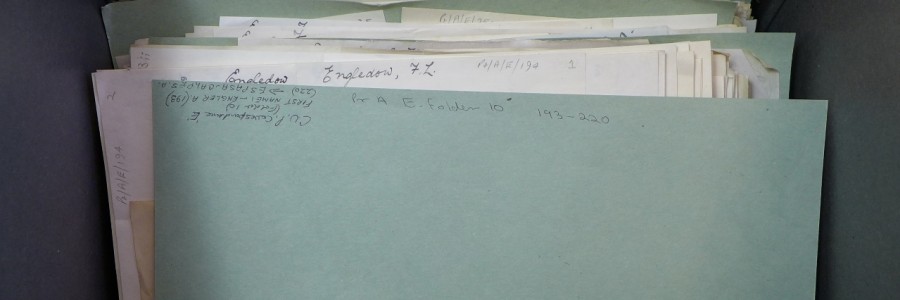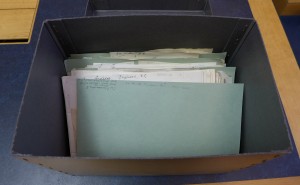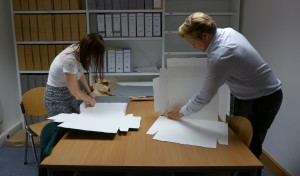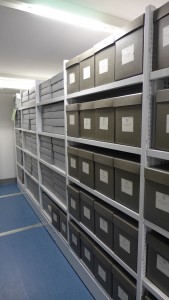
Volunteers experience ‘the magic and the meaning’ of the Cambridge University Press Archive
Since the 1970s, records from Cambridge University Press have been transferred from offices in the Pitt Building on Trumpington Street and the Edinburgh Building and University Printing House, both on Shaftesbury Road, to Cambridge University Library. The Press Archive contains records dating back to 1696, and forms a large part of the University Archives.
Over the past six months, Cambridge University Press employees have been volunteering in Cambridge University Library to assist Press Conservator, Fay Humphreys, re-house letters from Press authors dated 1913-52. The project gave them a touch of the magic inherent in archives and an insight into the process of archival research.
Philip Larkin described two types of value inherent in a literary manuscript: ‘the magical value and the meaningful value. The magical value is the older, more universal: this is the paper he wrote on, these are the words as he wrote them […] The meaningful value is of much more recent origin, and is the degree to which a manuscript helps to enlarge our knowledge and understanding of a writer’s work’.
Author correspondence files are the most frequently requested records in the Press Archive. Full of ‘meaningful value’ for researchers: tentative first ideas, acceptances and rejections, dates and addresses, personal news, payment negotiations, cover design alterations, the significant decisions and the minutiae of publishing. Added to this rich resource are many reader reports from eminent experts, and wonderful examples of the dry academic put-down (‘ … this would be a good book if it was written by somebody else’).
And there are plenty of them! Five A-Z series, transferred in batches from the Press offices to the University Library, contain letters dating from 1871 to 2013. With recent transfers from the Edinburgh Building, formerly the home of the Press publishing operation on Shaftesbury Road, there are now over 8,000 author files in the Press Archive.
They are consulted in the Manuscripts Reading Room of the University Library, requested by file reference number. The volunteers’ task was to make up acid-free archival boxes, then remove letters from upright storage boxes (either over-stuffed or slipping and bending because the boxes are half-empty) and place them in smaller horizontal boxes.
For researchers’ requests, references were written on the new envelopes and boxes. A time-consuming task, especially considering for this project there are 1239 files in 84 boxes requiring attention.
Sarah Grieves, Language Research Project Manager at Cambridge University Press, said, “Volunteering at the UL was a great chance to get a wider view of the Press, beyond the normal day-to-day work. Fay was a fantastic host, and I learned a lot not just about the history of the company, but also about conservation techniques and the principles behind them.”
The magic of archives lies not only in the physical sensation of touching the paper and seeing the ink, traces of the author’s hand, but also the intellectual delight of discovery. Whilst conserving the ‘A’ files, volunteers noticed a reader’s report by J.R.R. Tolkien [classmark UA/Pr.A.A.385]. A handwritten letter dated 29 January 1928, accompanying a typescript reporting ‘favourably’ on a work by Miss M. Ashdown, gives a glimpse of his famous signature. A descriptive catalogue entry and reference number will send a researcher directly to such an item, but it’s much more fun to find it serendipitously.
As neat rows of labeled boxes increase on the Press Archive shelves in the University Library strongrooms, volunteers can be proud that they have helped preserve the past for the future. Researchers may not appreciate that the documents they travel so far to see are, quietly and behind the scenes, given the best possible care by a team of Press employees.
Fay Humphreys (Press Conservator) & Ros Grooms (Press Archivist)



